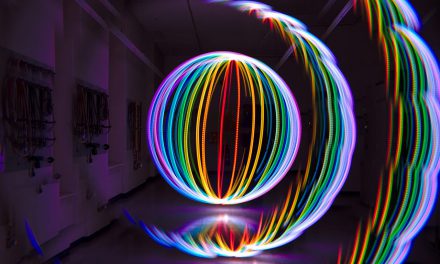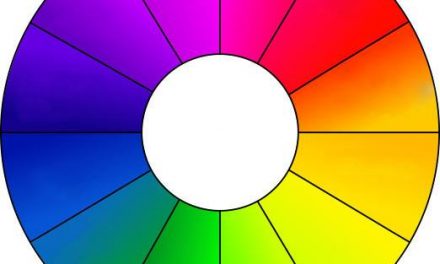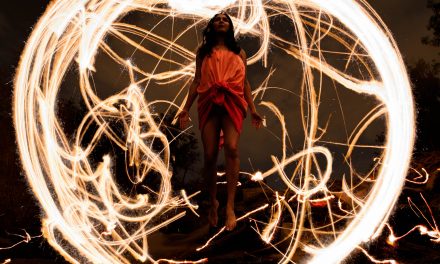
Nothing New Under The Sun

Denis Smith recently posted on Facebook about the first image ever shared in the Light Junkies group on Flickr. He offers his thoughts on his journey in light painting and shares these insightful words:
“If you make the effort, you will realise [sic: non-American spelling!] several things. The main one is that nothing is new. Everything you see today in contemporary light painting has been done. My love of spinning orbs came from light junkies. I stand on the shoulders of giants.”
It’s not completely true, and we will still see new techniques, but after 25+ years of serious modern light painting, and the earlier years before that, there isn’t a lot left to do that hasn’t already been done in some capacity or another.
Now, that’s not to say that you can’t improve on a technique and add your own touches to it, but with broad strokes it’s all been done before. This is true in Denis’s experience, it’s true in my own, and it’s probably true in yours. If you think it doesn’t apply to you for a new technique that you have ‘invented’ in 2018 then you probably haven’t looked hard enough to see what has come before you.
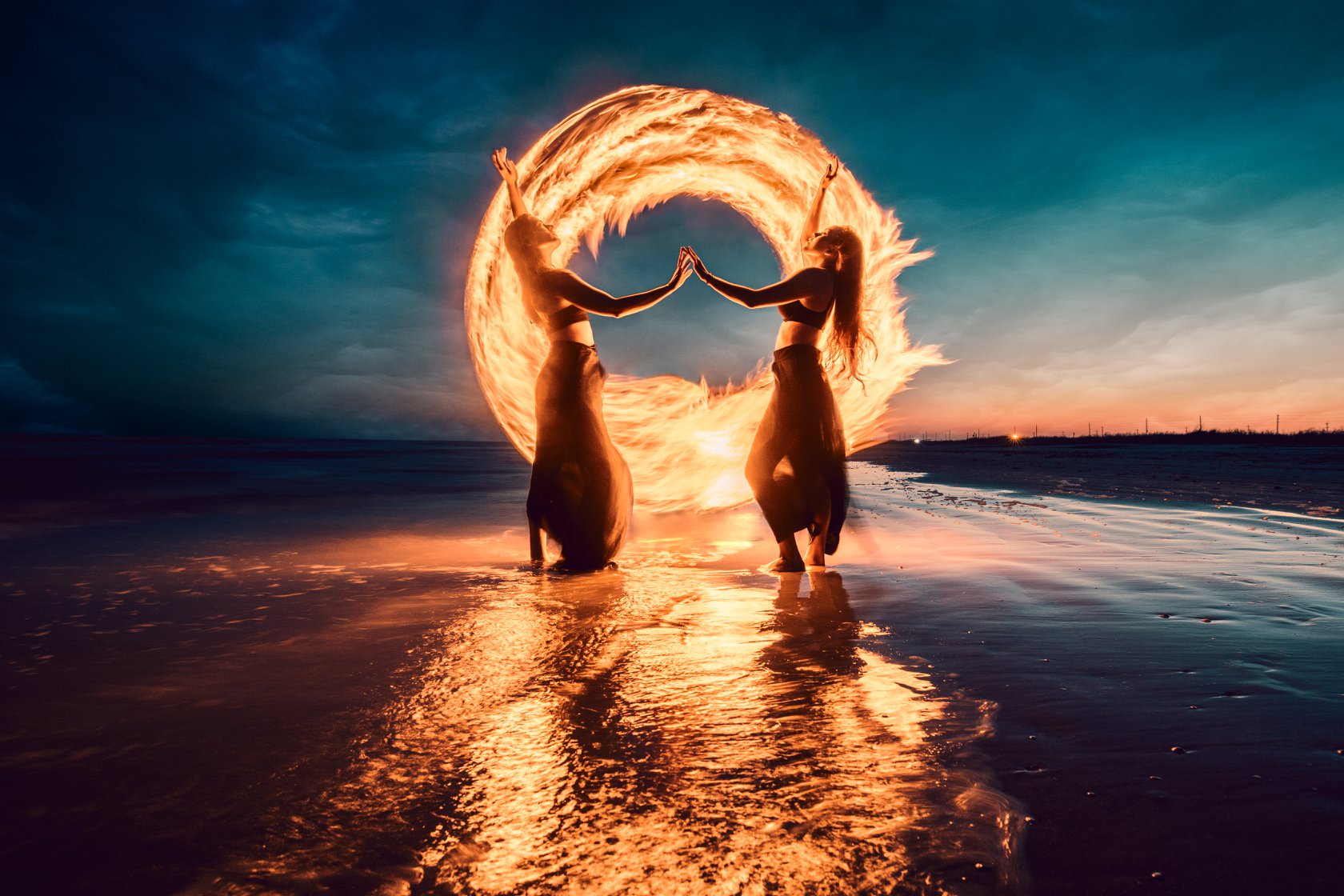
Photo: Zach Alan. Models: Juliet Merlot, Juli Thornton
Zach Alan is making a name for himself right now doing tube-inspired shots with fire, and he’s doing a damn fine job of it. Right now much of the light painting community thinks of Zach when they think of ‘fire light painting’. He is absolutely doing the best job of tapping into social media and sharing both his art and techniques, and more power to him. He didn’t even come close to inventing fire light painting. I say this because I did. I did some fun stuff with fire a few years ago, stuff I had never seen before. I invented fire light painting.
Well, of course I didn’t actually invent light painting with fire, but I’m writing this article so I get to take the narrative where I want to! What I had done is capture light of things burning, in my case it was fire poi. Before I did that there were people spinning steel wool, there were candles, there were fire fans (oh wait, I did those too, I actually invented fire light painting a couple years earlier than I thought!), fire fingers, fire staffs. People have also been capturing photos of fire performers for years, only they call them “long exposures” instead of light painting. The main difference is a little intent and perhaps a label.
I admire what Zach is doing, and that he shares his passion and techniques with the world. He’s also super nice. Did he invent fire light painting? Not even close, but he’s certainly making that style his own.
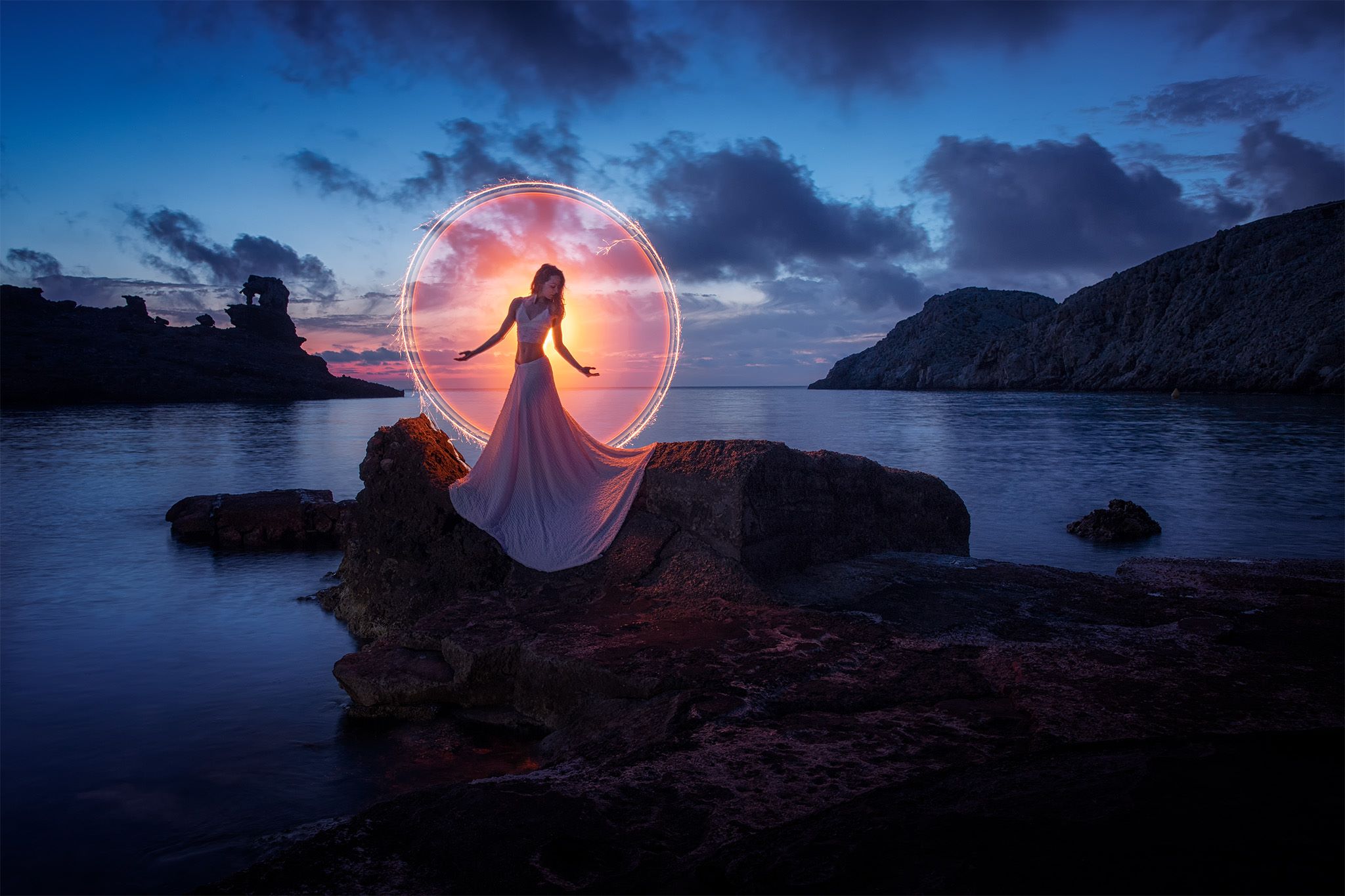
Photo: Eric Pare, Model: Kim Henry
Just above I said “tube-inspired”. Eric Pare has essentially redefined what light painting is in the public eye. Tubes have taken over light painting in a big way. It’s simple and it uses inexpensive materials found easily by many. I say this with the utmost respect for what he’s doing, but Eric wasn’t the first to do tube light painting nor, to the best of my knowledge, has he made that claim. In the same way Zach didn’t invent fire light painting, neither did Eric invent tube light painting. Both have taken those forms to new heights, and Eric has become the best known light painter in the world right now because of it.
Eric has been an amazing evangelist, an amazing person. He has vastly elevated the art of tube light painting and the traction he has behind his movement has benefited everyone in the light painting community. I imagine Eric found the tubes on his own and ran with it (and what a run!!), but I had experimented with the exact same model of physical tubes a year earlier. With how I used them, the tube shots were too simple for my then-tastes, I didn’t like what I was making with them, and I abandoned tubes for other toys. Eric saw more potential and created an entire movement! There’s also zero chance that I was the first to stick a light in a tube. Abe Rezny was doing something similar back in the 1980s, and he wasn’t alone. I didn’t see the giants, but wherever they were before me, I stood on their shoulders. Eric didn’t stand on my shoulders, since he had no reason to even know I had (poorly) used tubes, but he stood on the same shoulders I stood on.

Photo: Dan Chick, Model: Rose Pesca
Instead of tubes, I wanted to make really complex shots. A lot of people were freaking out about some shots I did involving prisms. They were unlike anything they’d seen before. I was happy to have this technique that was mine. I was thrilled to advance science in our art. But in an amusing twist, I had actually been privately pointed to the Fractal Filters prisms by Eric Pare, and he found out about them via a Kickstarter campaign, and that campaign existed because there were already people interested in prism photography. I made it my own, but it wasn’t “new under the sun”. Jason Rinehart got a set a year later and has been going to town with them, putting his own touch on the shots too. But just to be clear, prism photography goes back decades.
Eric just released Virtual Ink for video light painting. I also already had my own system, LightMonster, which built on four years of tinkering. Light Paint Live was born around the same time. But Will Light, Lichtfaktor, Hannu Huhtamo, and others have been doing video-based light painting since before anyone heard about any of our systems. I don’t know who the first person was who did video light painting but I also suspect it was nobody that I just named.
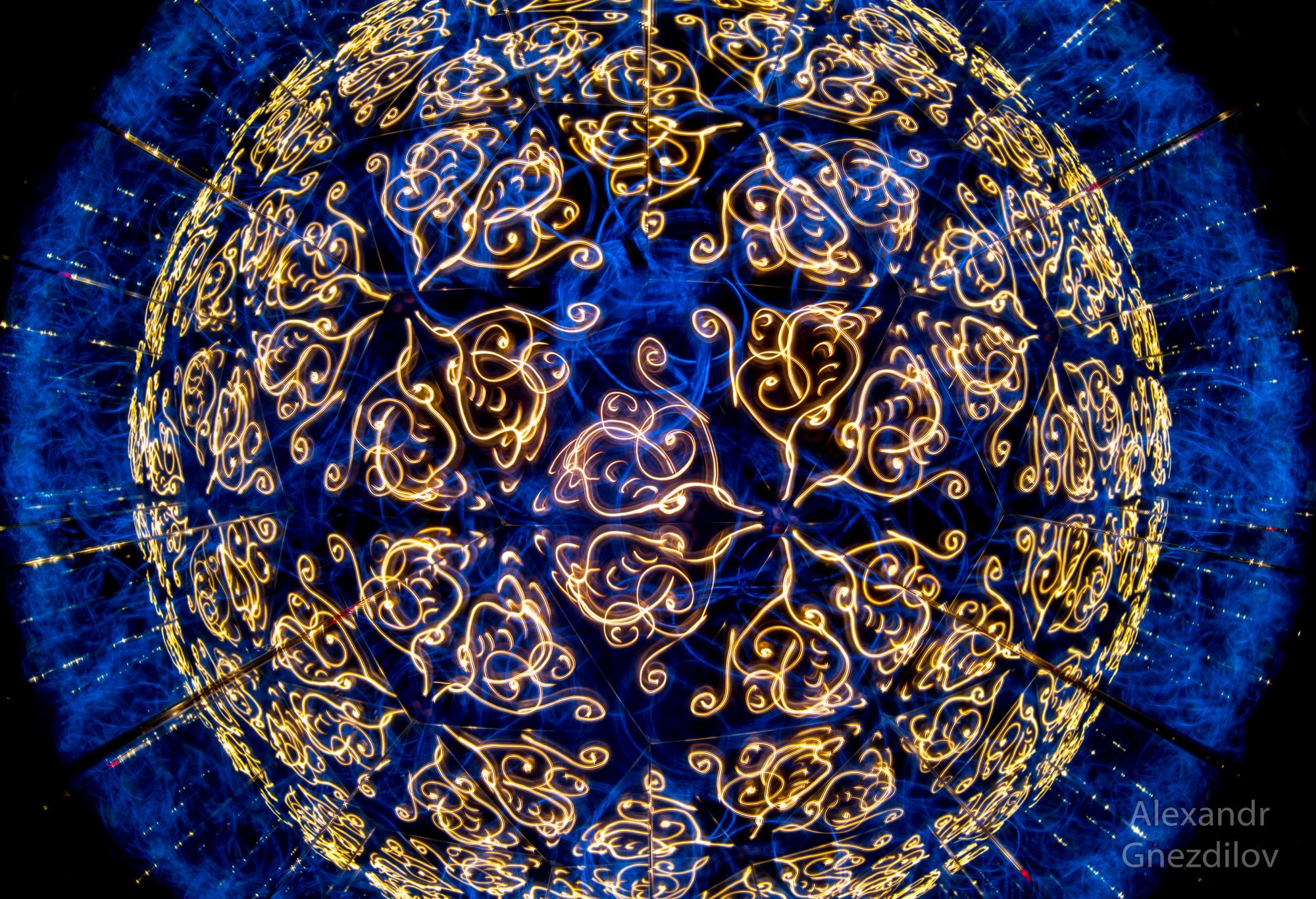
Photo: Alexandr Gnezdilov
Let’s try again. A couple years ago I made a kaleidoscope out of mirrors from a local hobby shop. I was excited to shoot them and to create effects unlike I’d seen before. It’s possible that I used some in new ways for model shoots, but I wasn’t the first to use them in light painting. I didn’t know about him at the time, but Alexandr Gnezdilov was doing kaleidoscopic light paintings at least a year before I was, albeit in different ways. He obviously put a TON of work into what he was doing and he made some mind-blowing images! Once again I was taking something in a slightly new direction but once again I wasn’t blazing completely new ground.
My first time doing steel wool involved doing it in motion over a 360 camera. I started doing 360 shots shortly after Mafu Fuma and Ulrich Tausend, but Jadikan preceded them. I don’t know who was the first to do 360 light painting. That one actually would have been something new in the recent past, as 360 cameras weren’t available to the public until only recently. Mixing 360 with motion with steel wool might not have been done before but it’s hardly “new under the sun”.
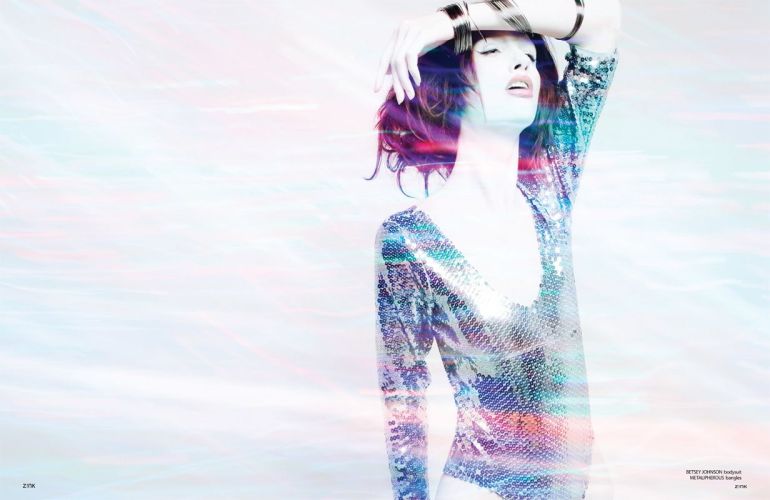
Photo: Aurora Crowley
A few years ago I released a tutorial on how to light paint on white backgrounds, using negative space to create sharp human shapes within which to light paint. I’d taken some inspiration from Aurora Crowley, but honestly, I thought the way I was doing it was a new one. A week after I released the tutorial I found some prior work by Tim Gamble, and I’m positive there were others who preceded me as well. I had initially credited Aurora as my inspiration and once I found Tim’s work I updated my tutorial to reference that as well.

Photo: Pala Teth
Pala Teth has his black hole/portal technique but that’s a specialized form of stencils. Some light painters use stencils but traditional photographers have been using stencils on flash far longer. While Pala’s technique is awesome and fun, dialed in and perfected, but it’s not something completely brand new in the world.
Damn. That’s eight things that all seemed kind of fresh, or exciting, that feel like they are expanding out light painting world…. and all of them are derivative in some way, and yet they are all worthy. It’s humbling to come up with new moves that aren’t actually new, but if you can let go of the need to ‘be first’ then can also be freeing. All of this has happened before, and it will all happen again, only more refined!
Light painters, keep creating and keep refining your tools and techniques! It’s amazing to see what everyone is coming up with. But also, do your research before claiming something is a new invention or that it’s never been done before. If you write up a tutorial or do a video, and someone in the community came before you and their work or moves inspired you, please give them a shout out, that’s only fair. Give credit where it’s due, and respect the shoulders of the giants we all stand on.











